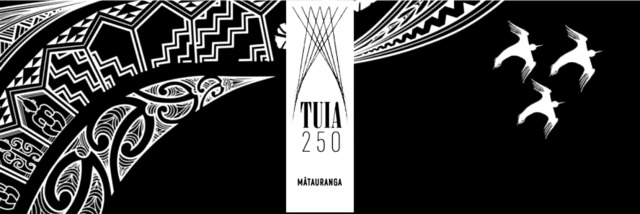
The Tuia Mātauranga GeoTour is about having fun discovering the history of Aotearoa New Zealand by finding sites of significance in local communities from early Pacific voyaging and migration, European settlement to present day. The interaction between people, and people and the land have provided a rich history that the GeoTour invites you to explore.
---
Welcome to Beachlands, Omana and Maraetai - the name Maraetai means "Meeting Place by the Sea". Maraetai was the original name for the smooth, calm tidal passage now known as Tamaki Strait, which is sheltered by Te Motu Arai-roa ("The Long Sheltering Island") now called Waiheke Island. Maraetai was a very early settlement. The Ngāi Tai tribe, descended from the people of the Tainui canoe, were the first residents of the area around Maraetai. European have lived there dating back to 1838 and both Maraetai and Beachlands were subdivided in the 1920s.
This geocache is about navigation. From the posted coordinates you will be able to observe modern recreational boats using the latest technology, safely navigating out to sea from Pine Harbour. In the days of Cook’s first visit to New Zealand, both Māori and European navigation was much harder.
The principles of traditional Polynesian navigation were simple, but its practice was refined with generations of experience. The greatest skill of the early navigators was their ability to read the night sky. The rising and setting points of the brightest and most distinctive stars and planets were gauged with the help of sophisticated star compasses, and then memorised. Compasses were also used to chart the winds.
Navigators steered their canoes toward a star on the horizon. When that star rose too high in the sky or set beneath the horizon, another would be chosen, and so on through the night. Seven to 12 stars were sufficient for one night's navigation, and the moon and bright planets such as Kōpō (Venus) and Pareārau (Jupiter) were also useful. At daybreak, navigators noted the position of the canoe in relation to the rising sun. As the sun got higher in the sky, they looked to where it would set in the evening. When skies were too overcast for navigators to use the sun, the moon, planets or stars, their course could be gauged according to ocean swells and currents. They also used clouds and the behaviour of animals, years of observation, and passed on knowledge and skills.
When Lieutenant Cook visited New Zealand, he was the first to utilise the newly developed method of lunar distances to find the longitude of his ship, so he had a better idea of his position than any previous European navigator on a major voyage of exploration.
When those previous navigators were sailing to an island they would sail well to its east (or west), sail down a longitude line to the right latitude and then sail west (or east) until they found it. If they had estimated incorrectly and they were on the other side of the island to what they had thought, they would be sailing away and in trouble. In contrast, Cook could sail directly to the location he wanted.
The method he was using to find longitude was the method of lunar distances or lunars. To facilitate the use of this method Cook had with him on his ship the Endeavour Nautical Almanacs, newly published by the Astronomer Royal Nevil Maskelyne. These almanacs listed the angular distance of bright stars from the edge of the Moon at various times at Greenwich.
To calculate the correct coordinates for the cache you will need to observe the channel markers - look closely and you will see that some have a red cylinder or can on the top - a square looking shape - these are the port hand markers. Next, take a look at the markers on the other side of the channel - these are topped with a green cone or triangle shaped object - the starboard markers. Count the total number of port (red) markers and the starboard markers (green).
The total number of markers = AB
The port markers=C
The starboard markers=D
The cache is at S S 36° 53.(A) (D+A) B' E 174° 59.(B-A) (B-A) (B)'
You are looking for a 200ml sistema container hidden away from prying eyes.
Sources:
https://teara.govt.nz/en/canoe-navigation/page-2
https://www.pohutukawacoast.co.nz/our-coast/beachlands
https://maas.museum/observations/2012/02/06/how-cook-navigated-to-tahiti/
https://www.maritimenz.govt.nz/magazines/lookout/issue-25/issue-25-4.asp
To be able to complete this Geotour and receive your special geocoin, remember to take a note of the codeword on the cache container. This will need to be recorded in your passport which can be downloaded from here. If the passport is unavailable for any reason just keep a note of the codeword and try again later.